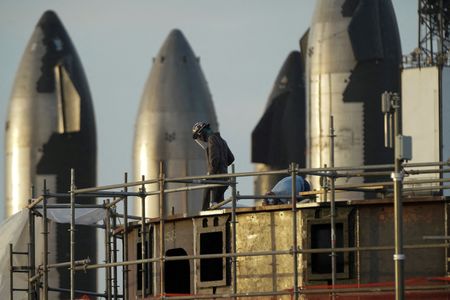By Marisa Taylor and Joey Roulette
WASHINGTON (Reuters) – Elon Musk’s SpaceX is facing a negligence lawsuit brought by the wife of a worker whose skull was fractured during a 2022 rocket engine malfunction.
The Jan. 18, 2022, engine malfunction involving Francisco Cabada was among the worker injuries detailed in a Reuters investigation of SpaceX late last year. Reuters documented at least 600 previously unreported workplace injuries at Musk’s rocket company: crushed limbs, amputations, electrocutions, head and eye injuries and one death.
His wife, Ydy Cabada, filed the lawsuit in a state court in Los Angeles, California, last week on behalf of her husband, who remains in a coma more than two years later. The lawsuit has not been previously reported.
SpaceX did not respond to questions about the lawsuit.
Ydy Cabada’s lawyer, Michael Rand, declined to comment.
Cabada was injured when part of a Raptor V2 engine broke away during pressure testing at the SpaceX facility in Hawthorne, California. The part, a fuel-controller assembly cover, careened into the SpaceX technician’s head, fracturing his skull.
Former SpaceX employees familiar with the accident told Reuters the incident illustrated systemic problems at SpaceX.
The sources told Reuters that senior managers at the Hawthorne site were repeatedly warned about the dangers of rushing the engine’s development, along with inadequate training of staff and testing of components. The part that failed and struck the worker had a flaw that was discovered, but not fixed, before the testing, employees said.
SpaceX had no comment about the Reuters investigation of the worker injuries, and had no response to detailed questions about the Cabada case. The U.S. National Aeronautics and Space Administration, which has paid SpaceX $11.8 billion to date as a private space contractor, did not immediately comment on the lawsuit.
SpaceX’s Raptor engines power Starship, the company’s next-generation rocket designed to send satellites and humans into space. NASA plans to use the rocket to land humans on the moon sometime this decade.
(Reporting by Marisa Taylor in Washington; Additional reporting by Joey Roulette in Washington; Editing by Matthew Lewis)












